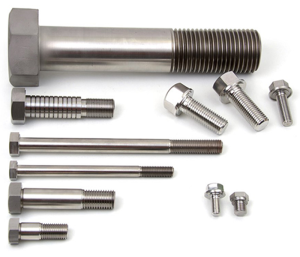ANTISHICNC CNC Turning Milling Machines,CNC Lathes
ANTISHICNC CNC Turning Milling Machines,CNC Lathes
 |
 |
Screws and nuts are extremely important basic parts in the mechanical field and many industries. In mechanical assembly, screws and nuts are used to connect and tighten various parts. For example, in automobile engines, many screws and nuts tightly connect engine cylinder blocks, cylinder heads and other parts to ensure the normal operation of the engine. If screws and nuts become loose or damaged, mechanical failures may occur. Screws and nuts are small daily parts, but they have a big impact. High-performance screws and nuts have high requirements for precision, which also requires a good CNC lathe for processing. Shanghai ANTISHICNC Company engineers summarized it as follows:
CNC Lathe Machine Processing Screws
1.Bar preparation: According to the screw size specifications, select bars of suitable diameter. The materials are generally carbon steel, stainless steel, titanium, etc., and the straightness and other precision of the bar must be guaranteed.
2.Turning the outer circle: Clamp the bar on the chuck of the CNC lathe, first rough turn the outer circle, leave a certain amount of fine turning allowance, and then fine turn the outer circle to the large diameter of the screw.
3.Processing threads: Use screw turning processing instructions (such as G32, G92, etc.) to process threads. Determine the thread pitch, tooth angle (such as 60°for ordinary triangular threads), thread length and other parameters, and cut the thread on the lathe. Usually, it is necessary to feed in multiple times and gradually cut to the appropriate depth.
4.Subsequent processing such as cutting or chamfering: If a specific length is required, cutting can be performed; in order to remove burrs and facilitate assembly, the ends of the screws will also be chamfered.
CNC Lathe Machine Processing Nuts
1.Blank preparation: Approximate size blanks can be obtained by casting, forging or directly cutting with bar stock.
2.Turning the inner hole: Clamp the blank, drill the hole first, and then use the inner hole turning tool to roughly turn the inner hole, leaving a fine turning allowance, and then fine turn the inner hole to the minor diameter of the nut.
3.Turning the inner thread: Also use the nut turning function of the CNC lathe, set the parameters according to the thread specification requirements of the nut, and process the inner thread. The feeding method is similar to the screw external thread processing.
4.Shape processing and chamfering: According to the design requirements, the outer contour of the nut is turned, including hexagonal, square, etc., and finally the edges and other parts are chamfered to make the nut have good appearance and assembly performance.
The size of screws and nuts is very small. The common screw diameter is 10-45mm and the length does not exceed 100mm. You can choose the H32I flat bed lathe of Shanghai ANTISHICNC Company. The model reference is as follows:
| Specifications | Unit | H32i |
| Max. Swing over Bed | mm | Φ320 |
| Max. Swing over slide | mm | Φ70 |
| Max. disc machining diameter | mm | Φ320 |
| Max. turning length (with row cutter) | mm | 280 |
| Spindle end type | A2-5 | |
| Spindle through hole diameter | mm | Φ48 |
| Bar diameter | mm | Φ40 |
| Hydraulic chuck | mm | HC640 |
| Hydraulic chuck pull rod through hole | mm | Φ40 |
| Spindle limit speed | rpm | 3500 |
| Knife square size | mm | 4 tools-20×20 |
 |
||
If you are also interested in the processing of screws and nuts, welcome to consult!
Keywords: Lathe machine, CNC lathe, Flat bed CNC lathe machine